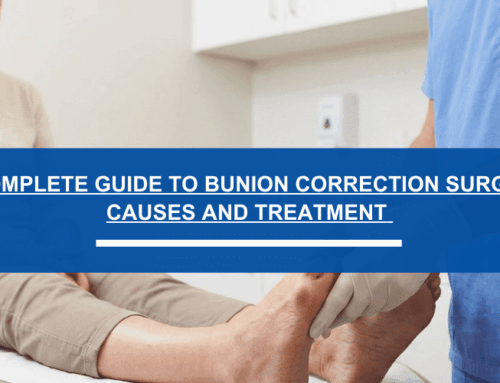Foot pain often gets brushed off—until it starts interfering with your daily routine. But if you’re limping out of bed, skipping workouts, or avoiding certain shoes, your feet might be telling you something important.
Ignoring foot issues can lead to long-term complications that affect your mobility and overall health. A licensed podiatrist can help diagnose and treat various foot and ankle conditions, improving your quality of life.
When to see a podiatrist?
Here are the top 5 signs it’s time to see a podiatrist—and why early care can prevent chronic pain and structural issues.
1. You Have Persistent Heel Pain
That stabbing sensation under your heel when you first wake up? It’s a classic symptom of plantar fasciitis. If rest, stretching, and supportive footwear haven’t helped, it’s time to see a foot doctor.
A podiatrist may recommend custom orthotics, physical therapy, or shockwave therapy to relieve inflammation and restore proper foot function. Addressing heel pain early can prevent it from becoming a recurring issue.
2. Your Feet Tingle or Go Numb
Tingling, burning, or numbness—especially in the toes or soles—may indicate peripheral neuropathy, a condition often linked to diabetes or nerve compression.
This symptom isn’t just uncomfortable; it can lead to balance problems, unhealed wounds, and even foot ulcers. A podiatrist will assess the cause and recommend treatments to improve circulation and nerve health.
3. You’ve Got Bunions or Hammertoes That Are Getting Worse
Bunions and hammertoes are common structural foot deformities that worsen over time if untreated. You might notice joint stiffness, shoe pressure, or pain while walking.
Podiatrists can suggest conservative treatments like toe splints, custom footwear, or targeted exercises that may reduce pain and delay the need for surgery.
4. Your Arch Collapsed, or You Have Flat Feet
If your arch has fallen or your foot appears noticeably flat, it may be more than just a cosmetic concern. Flat feet can lead to misalignment that affects the knees, hips, and lower back.
Treatment options include custom insoles, arch-strengthening exercises, and supportive shoes. Early intervention helps improve posture and prevent secondary joint pain.
5. You’re Avoiding Activities You Enjoy
Are you skipping hikes, workouts, or long walks because of foot pain or fatigue? Avoiding movement is a red flag. Pain in your feet, toes, or ankles shouldn’t be normalized.
A podiatrist can identify the root cause of your discomfort and recommend a treatment plan to get you back to doing what you love, pain-free.

When in Doubt, Step In Early
Seeing a podiatrist isn’t just for athletes or the elderly—it’s for anyone whose foot health is interfering with daily life. Early care helps prevent minor discomfort from turning into chronic pain.
Your feet carry you through life. Prioritize their care by consulting a podiatrist when something feels off.
Frequently Asked Questions
1. When should I see a podiatrist for foot pain?
You should consult a podiatrist if foot pain persists for more than a week, worsens with activity, or interferes with walking or standing.
2. What are the symptoms of plantar fasciitis?
Common symptoms include sharp heel pain in the morning or after rest, especially on the underside of the heel.
3. Can flat feet cause back pain?
Yes, flat feet can cause misalignment in the legs and spine, which often leads to knee, hip, or back pain over time.
4. Is numbness in the feet serious?
Yes, numbness can be a sign of nerve damage, such as diabetic neuropathy, and should be evaluated by a medical professional promptly.
5. Can bunions be treated without surgery?
In many cases, yes. Conservative treatments like custom shoes, toe spacers, and physical therapy can provide relief and slow progression.







